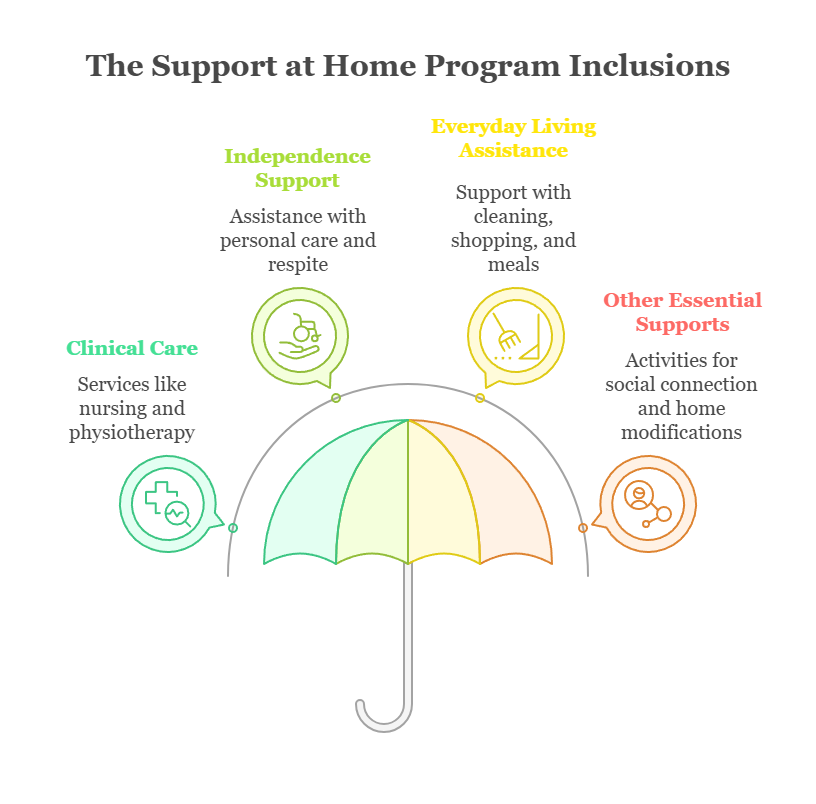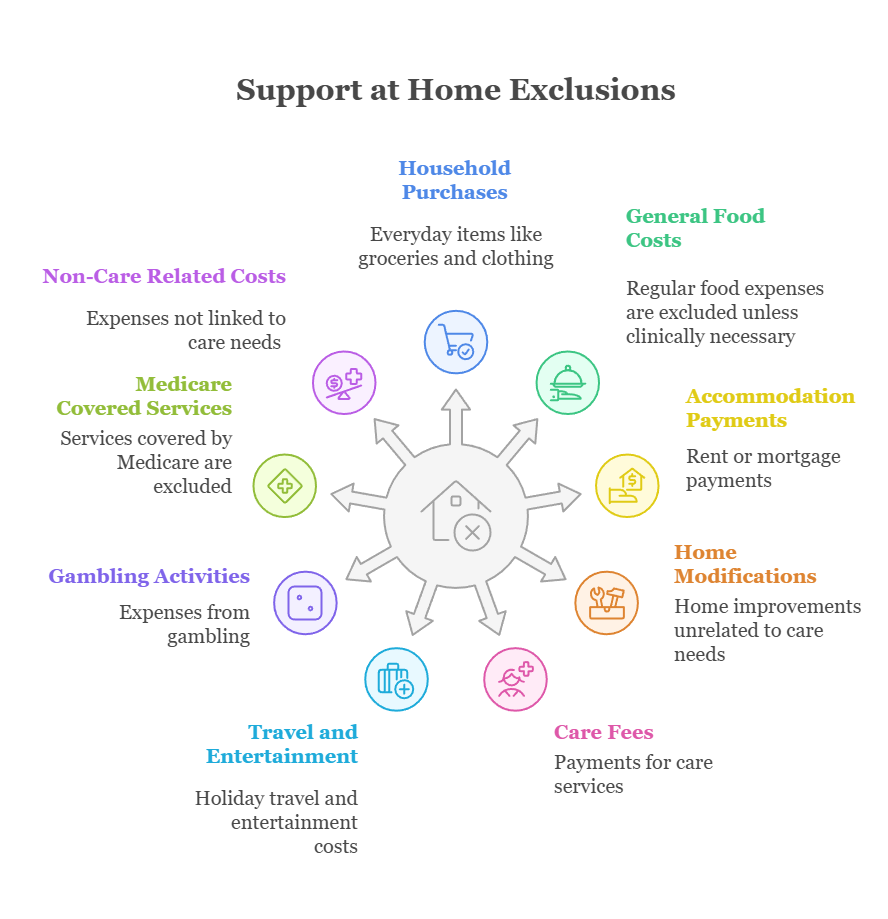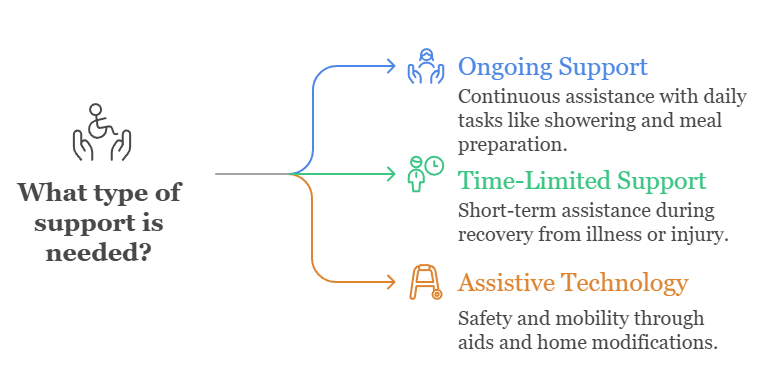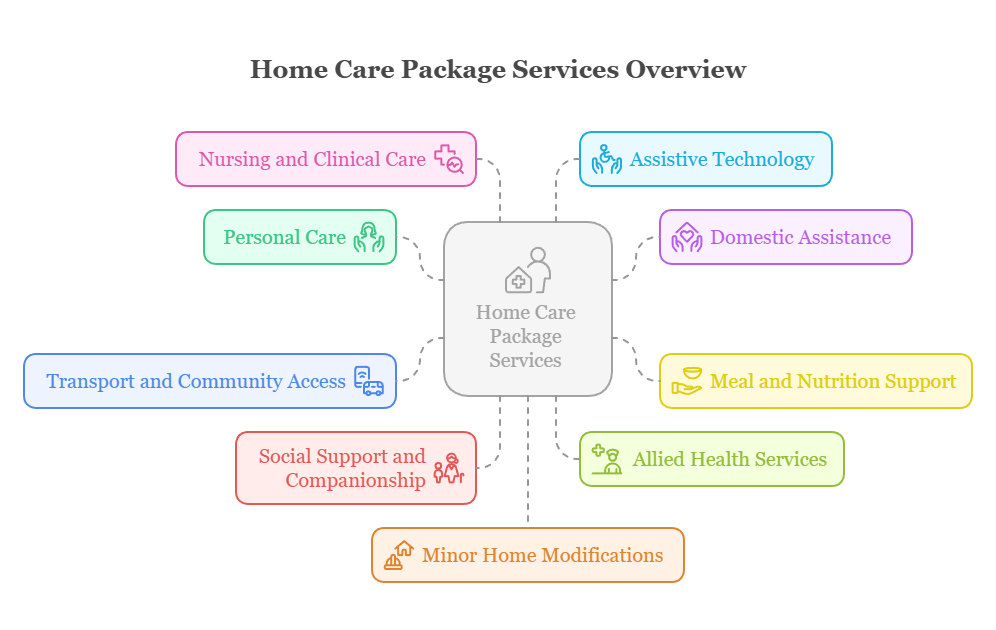By
Haisey Home Care
Updated on: August 12, 2025
•
x min read
Find out what services are covered and not covered in Australia's Support at Home Program and how to make the most of your care plan.

Summary: The Support at Home Program, launching in November 2025, will replace existing home care models in Australia. This includes Home Care Packages (HCP) and Short-Term Restorative Care (STRC). The Support at Home Program will include clinical care, independent support, everyday living assistance, and other essential services. It will not include expenses unrelated to the person's aged care needs. There will be more details concerning Support at Home inclusions and exclusions as the program is rolled out.
Many Australian families are interested in in-home aged care support, but they're not sure what it includes.
Most package coverage depends on the person's needs, but there are limitations. There are also quite a few exceptions and special rules for certain circumstances.
You can access services through your HCP budget. Some services must be arranged or paid for separately.
The good news is that all the services covered by Home Care Packages will now fall under the Support at Home Program.
It's a single, streamlined system designed to bring all in-home aged care services under one national framework.
However, the transition may bring changes to both inclusions and exclusions.
Some services currently available might be modified. Others could be added or removed altogether.
If you want to find out more about Support at Home inclusions and exclusions, keep reading.
Support at Home refers to a broad range of services designed to help older Australians live safely, independently, and comfortably in their own homes.
It can also apply to services for people with disabilities or short-term health needs.
Beginning 1 November 2025, the Australian Government's new Support at Home Program will be rolled out. It will replace several existing programs, including:
It's part of a larger reform to simplify aged care services.
The Support at Home Program will provide more flexibility, clarity, and consistency for older Australians and their families.
The Support at Home Program will group services into four clear categories so you know exactly what's available.
This helps ensure funding is used for care that supports health, safety, and independence.
These four categories include:

Some services and costs will not be covered under Support at Home. These include:

The exact list of Support at Home inclusions and exclusions is not yet fully available. We'll know more when the Support at Home program actually starts.
The government has grouped support services into three main types, based on the purpose and duration of care.
Understanding these categories helps clarify what kinds of services may be included, and under what circumstances.
Here are the three key types of support:
Designed for individuals who need continued help with daily tasks. This includes things like showering, dressing, meal preparation, and regular transport to appointments.
Short-term help provided after a hospital stay, illness, injury, or when someone is recovering and needs help regaining independence.
Services in this category provide aids and minor home changes to improve safety and mobility, such as walking frames, personal alarms, grab rails, or bathroom modifications.

These support types guide what's included in your care. But services must be assessed and approved based on your individual situation.
We still don't know what exactly the Support at Home Program will entail. It's planned to include most services that are covered by Home Care Packages.
These are the most common types of services currently included by Home Care Packages:
This includes help with daily self-care tasks such as bathing, dressing, grooming, toileting, and mobility support.
Services that support home upkeep, including cleaning, dishwashing, laundry, and changing bed linen.
Help with grocery shopping, preparing meals, managing special diets, and sometimes assistance with eating.
Transport to and from medical appointments, social outings, shopping trips, and other essential activities.
One-on-one or group activities to reduce isolation, encourage social interaction, and support mental well-being.
Professional therapies such as physiotherapy, occupational therapy, podiatry, and speech therapy.
Care from registered nurses for medication management, wound care, continence support, and monitoring of health conditions.
Provision of devices like walking frames, bed rails, hearing amplification devices, or emergency call systems.
Small safety-related upgrades, such as installing grab rails, ramps, non-slip flooring, or raised toilet seats, typically covered through the AT-HM stream.

It's important to note that not every service listed here will be available to every client.
Access depends on:
The upcoming Support at Home Program marks a major shift in how Australians receive in-home aged care.
Many familiar inclusions and exclusions from the current Home Care Package system will remain.
However, others may change as services are streamlined under the new national framework.
Understanding these boundaries now will help you plan with confidence, avoid surprises, and make informed choices about your care.
At Haisey Home Care, we pride ourselves on making that process as clear and stress-free as possible.
Our team can guide you through the transition and explain what's covered in plain language.
If you're ready to navigate these changes with clarity and support, contact Haisey Home Care today.
Let's discuss your options and secure the care that's right for you.
{{cta}}
Chat with us to learn more about how we can help you. Book in a free, no obligation in-home consultation.
